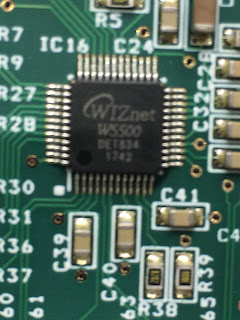I can cobble this up fairly easily (as indeed I have done before) and operate the thing in manual mode. The auto mode would require something appropriate at the other end of the interconnect cable, either sending 24V signals or more likely some switch contacts. That's not about to happen.
Here's the arm doing its thing. As noted previously,
And here's the Geneva wheel thingy doing its business. Very impressive.
The successful operation of the tool changing process his thing is entirely dependent on the mechanism within the arm. Ingenious though it my have been thought when it was devised, if it's buggered or simply worn out, any effort I expend getting it cobbled up onto the machine and connected up with some form of modern controller (Arduino - or directly using the Acorn?) could be wasted.
What next, Fat Boy?
Yeh, so what? Well for one thing, the whole chebanc weighs several tonnes. Managing to get this thing offered up - and finally fixed to the side of The Shiz could be a bit of a nightmare. And half of the guts of this thing are not long for this world. Why's it so damned heavy?
In practice, I only need to mount the arm mechanism alongside the spindle of The Shiz and (if the basic mechanism can be made to work consistently) the tool carousel / chain thing could then be mounted on a shelf next to that.
As for the baseplate, it's the best part of 3/4" thick and despite being made of loominum, would chop your feet off and make a hole in the ground if you dropped it on them. Admittedly 40 taper tools are fairly heavy but even so, it seems a bit OTT.
Then there's the whole forest of relays / solenoid tree / giant pneumatic piston / front panel etc. Most of that can simply be junked and the arm operated by a motor / reduction gearbox. Currently, the arm is operated by a 2" diameter piston with an in-built damper piston. Given that the stroke is something like 6", that makes the whole piston assembly the best part of 18" long and it even sticks out the back of the cabinet.
Said solenoid tree:
Relay forest and front panel:
Most of that stuff could go straight in the skip, including the front panel itself.
This is the machine side of the cabinet:
Keep your nadgers away from this when operating in manual mode. Of course, when bench testing it, you will be standing in just the right place....
And this is where it's supposed to be fitted.
Something to think about....





































